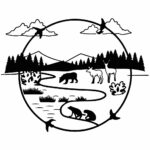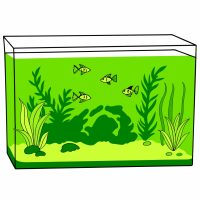Question More, Action Knowledge.
Remember, at QMAK, we don’t just teach; we empower. We don’t just inform; we inspire. We don’t just question; we act. Become a Gold Member, and let’s unlock your child’s full potential, one question at a time.
Have you ever tried balancing a pencil on its tip?
It’s really hard to keep it perfectly still and upright, isn’t it?
But if you place a heavy book on top of the pencil, suddenly it becomes much easier to keep it balanced.
That’s because the book and the pencil have reached a state of equilibrium – a condition where everything is stable and evenly distributed.
Equilibrium is all about balance and stability. It’s a situation where all the forces acting on something are equal and opposite, resulting in a state of balance or non-movement.
Equilibrium is incredibly important in all kinds of systems, from simple objects like a pencil and book to complex systems like ecosystems or even our own bodies.
Equilibrium is all around us in the natural world and in the systems and structures we create:

A seesaw or teeter-totter at the playground reaches equilibrium when the weights on both sides are equal, allowing it to balance perfectly.

Our bodies maintain equilibrium through a process called homeostasis, where temperature, heart rate, and other variables are constantly adjusted to keep us in a stable, healthy state.

In an ecosystem, the populations of different species exist in a state of dynamic equilibrium, with birth rates and death rates fluctuating to maintain a balanced system.

In a well-designed building, the distribution of weight and the strength of the materials create a state of equilibrium that keeps the structure standing strong and stable.
Understanding equilibrium is important because it helps us recognize and maintain stability in various systems.
Here are a few reasons why equilibrium matters:

Remember, equilibrium is all about balance and stability. By understanding this concept, we can learn to recognize and maintain equilibrium in the systems and structures around us, ensuring they function smoothly and efficiently, and preventing collapse or failure.
Please note: We now have a longer article on Equilibrium Points and the Law of Diminishing Returns in the “Mental Models” section of our website.
Below are three math problems and critical thinking exercises focused on Equilibrium, specifically designed for three age groups: Elementary, Middle School, and High School students. These exercises go beyond standard math problems by encouraging deeper analysis and reflection on how biases can influence decision-making.
Skill: Basic arithmetic and systems thinking
Activity: Solve problems about maintaining equilibrium in an aquarium
Goal: Understand balance in ecosystems through mathematical modeling

Skill: Algebra and rate calculations
Activity: Model water flow and balance in an environmental system
Goal: Connect mathematical modeling with real-world resource management

Skill: Differential equations and system dynamics
Activity: Model climate systems and feedback loops
Goal: Apply advanced mathematics to understand global environmental challenges

Nausicaä of the Valley of the Wind offers a compelling exploration of ecological equilibrium that resonates perfectly with systems thinking concepts. Set in a post-apocalyptic world where a toxic forest threatens human survival, the film presents a clear yet profound demonstration of how complex systems maintain balance.
Through the eyes of Princess Nausicaä, students witness how each element in an ecosystem – from the massive Ohmu insects to the smallest spores – plays a crucial role in maintaining environmental harmony. The film brilliantly illustrates how human interference with natural systems can trigger far-reaching consequences, while also showing how careful observation and understanding can lead to solutions that work with, rather than against, nature’s inherent balance.
As Nausicaä conducts her experiments and observations in her secret garden, she models the very process of systems thinking that we want to cultivate in young minds: curiosity, careful observation, hypothesis testing, and recognition of interconnected relationships.
(Verse 1)
Balancing a pencil, on its tiny tip
It’s a tricky task, that can make you flip
But with a book on top, the balance is found
Equilibrium achieved, stability crowned
(Chorus)
Equilibrium, equilibrium, the state of perfect balance
Forces equal and opposite, no more imbalance
In static or dynamic, the system finds its way
Equilibrium, equilibrium, the foundation of our days
(Verse 2)
In nature’s ecosystems, and in our bodies too
Equilibrium is key, to keep things running true
A seesaw at the playground, a building standing tall
Equilibrium’s the secret, that keeps them from a fall
(Bridge)
Preventing collapse, allowing adaptation
Promoting efficiency, supporting creation
Equilibrium’s importance, cannot be overstated
In the world around us, it’s forever instated
(Chorus)
Equilibrium, equilibrium, the state of perfect balance
Forces equal and opposite, no more imbalance
In static or dynamic, the system finds its way
Equilibrium, equilibrium, the foundation of our days
(Verse 3)
To understand this concept, we must explore and play
With balancing acts and seesaws, we’ll find our way
Observe the natural world, and the balance that it keeps
Equilibrium’s the lesson, that we must seek
(Bridge)
From the smallest structures, to the grandest schemes
Equilibrium’s the thread, that runs through all our dreams
Maintaining stability, preventing disarray
Equilibrium’s the guide, that shows us the way
(Chorus)
Equilibrium, equilibrium, the state of perfect balance
Forces equal and opposite, no more imbalance
In static or dynamic, the system finds its way
Equilibrium, equilibrium, the foundation of our days
(Outro)
So seek out equilibrium, in all that you do
In the systems you create, and the life you pursue
With balance and stability, you’ll find your groove
Equilibrium, the key, to help you improve!
Remember, at QMAK, we don’t just teach; we empower. We don’t just inform; we inspire. We don’t just question; we act. Become a Gold Member, and let’s unlock your child’s full potential, one question at a time.